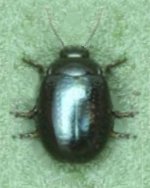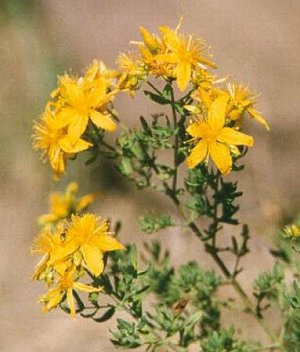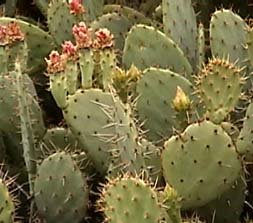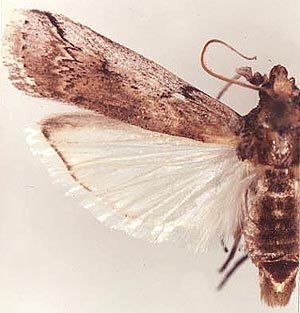Insect Weed-Eaters

Chrysolina sp.
A chrysomelid beetle, Chrysolina quadrigemina, and a pyralid moth, Cactobastis cactorum, are probably the two most dramatic examples of beneficial insects that have been successfully introduced for the control of weeds.

Klamath weed
Klamath weed, also known as St. John’s wort or goatweed, is a native of Europe and Asia that was accidently brought into northern California around 1900. The plant, which is poisonous to livestock, spread rapidly throughout the pasturelands of California and adjacent states. By 1945, it had rendered over 4 million acres of rangeland unfit for grazing livestock. In the late 1940’s, several leaf beetles collected in the weed’s native Europe were imported to California and released on infested rangelands. The most successful of these species, Chrysolina quadrigemina, soon became established and by 1956, it had largely eliminated klamath weed as a threat to livestock in the western United States. Today, small pockets of the weed still exist in shady sites where the beetles do not survive well. These isolated weed populations are sufficient to maintain the beetle population at a level that effectively suppresses further outbreaks of the weed.

Opuntia sp.
Prickly-pear cacti (Opuntia inermis and O. stricta) were brought into Australia around 1839 as horticultural curiosities. The plants soon escaped cultivation and became established as major weed pests of farms and rangeland. They formed dense, impenetrable thickets that grew 2-3 meters (6-10 feet) tall and choked out all beneficial plants. By 1920, the cacti had overrun nearly 25 million acres of pastureland in Queensland and New South Wales and were expanding their range at the rate of nearly 250,000 acres a year. In 1925, the Australian government inported and released a Pyralid moth, Cactoblastis cactorum, that had been found in South America. This insect, whose larvae burrow into the cacti and feed internally, brought about the general collapse and destruction of the original weed populations within five years of its release.

Cactoblastis cactorum
After the successful control of O. inermis and O. stricta in Australia, a similar program was started in South Africa using C. cactorum to control tiger pears (Opuntia aurantiaca). The moths, however, were far less effective against this species. Instead, several insects that had shown only moderate promise in Australia before the introduction of C. cactorum proved to be more effective in South Africa. These included a scale insect, Dactylopius sp., and a plant bug, Chelinidea tabulata.
In the 1950’s, C. cactorum was again recommended as a biocontrol agent for Opuntia megacantha in Hawaii. This time, violent opposition to the control program arose from cattle ranchers who felt the cactus was a useful source of food and water for their livestock. This conflict of interest developed because the biological control program could not be selectively applied to geographical areas where the plant was considered a pest. If the insect became established, it could potentially infest the cactus wherever it grew. The conflict was eventually resolved when the rangelands became so overgrown with cactus that the ranchers recognized it as a nuisance. C. cactorum was released and soon brought the pest population under contol.

